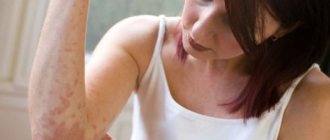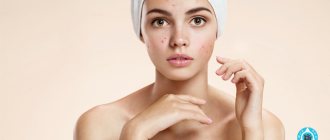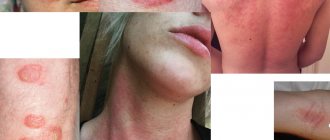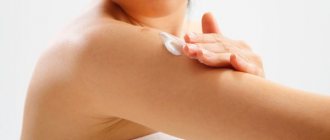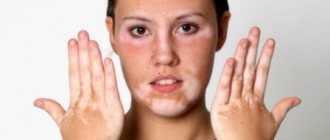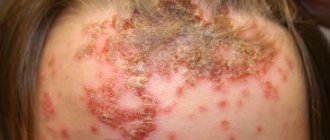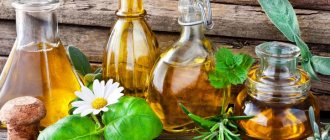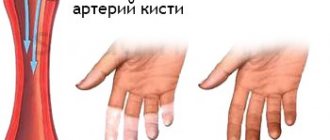Everyone knows what happens to dried soil - it cracks. The same thing happens with human skin, which for one reason or another does not receive enough moisture. The dermis changes its appearance, becoming gray, dull, and overly pigmented. Dehydrated skin constantly flakes and itches on the body, becoming wrinkled. It is often damaged by scratching, and this is how microcracks appear. What causes dehydration, and how to get rid of xerosis? What is another name for the condition when the skin becomes unnaturally dry, we’ll talk about it in the article.
What does dry skin mean?
Dry skin (xeroderma) is a symptom that the epidermis does not receive enough moisture. The epidermis is the outer layer of the skin, which is represented by horny scales. There are no living cells in the epidermis. It contains little water, about 20%. When this level of moisture decreases, the layer of skin located under the epidermis begins to evaporate it intensively. As a result, metabolism is disrupted, the skin becomes dull and vulnerable. Pathogenic microorganisms easily penetrate through such a weak layer. They can cause various diseases.
Types of dry skin
Dry skin can be of 2 types:
- Skin with increased tone. The elasticity of such dermis is not impaired. If a person takes proper care of it, then premature wrinkles will not appear. Without care, the tone of the dermis quickly decreases. This type of skin is typical for young people.
- Skin with low tone. This dermis is dry and thin, it is prone to the formation of wrinkles. Caring for it is difficult; it is difficult to restore it with the help of cosmetics. To combat premature aging, a person needs to resort to various methods, since standard cosmetic kits do not allow one to cope with the problem.
Determining your skin type is not difficult. Simply pinch it between two fingers and release. If the wrinkles are smoothed out slowly, then it is overdried and not sufficiently moisturized.
Folk remedies for red spots on the face
Folk recipes for homemade masks will tell you how to quickly remove red spots on your face using products that you always have on hand. They can be done for 7-10 minutes every other day. If these are applications or lotions - daily.
Cucumber mask
Mix cucumber puree (50 g) with white clay (20 g), diluted to the desired consistency with a decoction of chamomile. It turns out to be a very effective mask for red spots on the face, regardless of the reasons for their appearance.
Sour cream mask
Mix 20 grams of the fattest sour cream with raw, finely grated potatoes (50 grams). Add 5 drops of tangerine essential oil.
Oatmeal mask
You can eliminate red spots with a nourishing whitening mask. Mix 20 grams of oatmeal with 10 ml of lemon juice diluted with water.
Algae mask
If red spots do not go away for a long time, treat the skin with algae and clay. Leave the kelp to swell in water, squeeze out and mix in equal proportions with green or black cosmetic clay.
Multi-component mask
Mix 10 grams of full-fat sour cream, honey, lemon juice diluted with water, and olive oil. Add 5 drops of either vitamin A or E (or 2 drops of both).
Chamomile mask
Try removing dry red spots on your face with a mask of baby cream (30 g), chamomile infusion (a few drops), olive oil (10 ml). This remedy can even be used to treat children.
Parsley mask
Pour a glass of boiling water over chopped parsley leaves (20 g). Leave for an hour. Strain and use the greens for the mask, mixing it with sour cream in equal proportions. And the resulting infusion can be poured into molds for making cosmetic ice. This recipe will help those who have red spots on their face that are flaky and itchy.
Clay mask
The following mask will deal with red pigment spots on the face. Dilute white clay with warm chamomile infusion until the desired consistency is obtained. Add some lemon pulp and olive oil. This mask will also cope with the problem of rashes and acne.
Garlic tincture
Garlic tincture lotions effectively deal with red spots on the face, but they are contraindicated for treating sensitive, thin skin. Pour chopped garlic cloves with alcohol in a ratio of 1 to 2. Leave in a dark place for a week. Lubricate problem areas daily.
Decoction of medicinal herbs
Mix birch buds, linden blossom, and calendula in equal quantities. Pour 50 grams of the mixture into 500 ml of hot water, boil for 15 minutes, cool, strain, and make daily lotions.
Causes of dry skin
To prevent the skin from drying out, it is endowed with a water-lipid layer that covers its cells. The water-fat film also protects the dermis from moisture loss.
Its main functions:
- Maintaining skin elasticity.
- Suppression of the growth of pathogenic flora.
- Maintaining normal pH levels.
- Removing toxins from the body.
When the dermis loses lipids and moisture, it loses protection and becomes vulnerable to external factors, that is, it becomes dry.
External (exogenous) causes
Causes leading to excessive dry skin:
- Environmental factors: ultraviolet radiation, wind, frost, hot air, harmful emissions contained in the air, etc. These factors can cause dry skin even in absolutely healthy people.
- Incorrect use of cosmetics or improper skin care: excessive application of liquid soap, gels to the dermis, washing with hot water, etc.
- Insufficient time for rest, overwork, too hard work, etc.
- Contact with household chemicals without the use of protective equipment. Many manufacturers indicate on the packaging that you need to wear gloves when interacting with their products. However, people often simply ignore this advice. As a result, aggressive chemicals destroy the skin. The dermis becomes dry and tight, and damage appears on it.
- Frequent peelings. If you overuse exfoliating products, your skin will become dry and thin.
- Smoking, drinking alcohol. These bad habits negatively affect the condition of the dermis. They dry it out, change its color and contribute to the appearance of wrinkles. The vessels that nourish the skin suffer. It becomes so thin that the capillaries begin to show through.
- Features of professional activity. Work in the field of mechanical engineering or glassmaking, in hot shops, and in the canteen has a negative impact on the condition of the dermis. The skin loses moisture and becomes very dry.
- Taking certain medications. Dry skin is often observed in patients taking retinoids, diuretics, hormonal agents, and corticosteroids.
Internal (endogenous) causes
There are many internal reasons that can lead to xerosis.
The most common of them include:
- Hereditary factors. Often dry skin is a feature of genetics. Xerosis accompanies various genetic diseases, for example, it is characteristic of atopic dermatitis, psoriasis, and ichthyosis.
- Errors in the diet. The skin can lose moisture due to the fact that a person does not receive enough vitamins, minerals, proteins, fats and just liquid. An overabundance of hot, salty and spicy foods in the menu negatively affects the condition of the dermis.
- Hormonal imbalance. During hormonal surges, the dermis often becomes dry. A similar problem plagues many teenagers, pregnant women and women during menopause.
- Kidney failure. Most patients with serious kidney problems have dry skin. Organs cannot cope with their functions, harmful substances are not excreted in urine, but accumulate in the body, poisoning it. In addition to dry skin, patients suffer from excessive fatigue, thirst, dry mouth, nausea and lack of appetite.
- Chronic colitis. With this disorder, the lining of the large intestine becomes inflamed. A person suffers from diarrhea, which exhausts the patient, leads to weight loss, weakness and fatigue. Vitamins are removed from the body, vision suffers, and symptoms of vitamin deficiency develop. With such a disorder, not only the skin, but also the mucous membranes will be dry.
- Hypothyroidism. This pathology is characterized by a malfunction of the thyroid gland. Patients' skin becomes very dry, hair begins to fall out, and swelling appears. Other complaints include: constipation, low blood pressure and excessive weakness.
- Diabetes. With this disease, most metabolic processes in the body fail. The carbohydrate, protein, water-electrolyte and fat balance is disturbed. The main symptom of the disease is frequent urination. The body loses water, the person wants to drink all the time. Other signs of the disease include: dry and itchy skin, increased weakness and fatigue, blurred vision, ulcerative processes affecting soft tissues. Skin defects do not go away for a long time, which is associated with deterioration of nutrition at the cellular level.
- Dystrophy. With this disease, tissues lose or accumulate substances that should not be in them. The skin of a sick person becomes dry and pale.
- Deficiency of vitamin A and vitamin PP. The patient's skin becomes dry and very flaky. This vitamin deficiency occurs like pityriasis versicolor (external signs).
- Sjögren's disease. This disease is of an autoimmune nature. Various secretion glands are affected. Dry skin is a clinical sign of this disorder. Other symptoms of the disease include: photophobia, blurred vision, caries, stomatitis, etc.
- Stress. Emotional shock is accompanied by an increase in cortisol levels in the blood. This hormone in excess amounts causes dry skin.
Preventive measures
In order for the skin to always have a fresh, moisturized, healthy appearance, it is necessary to pay due attention to:
- You need to analyze your eating habits, limit your intake of sweets, processed foods, fatty, fried, smoked foods. It is also advisable to establish a meal schedule and balance the diet with foods rich in minerals, vitamins, and fiber.
- The skin may itch due to allergies, in this case it is worth reviewing your diet in search of an allergen: dairy products, citrus fruits, etc.
- To avoid vitamin deficiency, twice a year you need to pamper your body with a multivitamin supplement to your diet.
- Bad habits are a big blow to the skin. You can return her to a healthy appearance simply by getting rid of her addiction to alcohol and cigarettes.
- You need to carefully choose the composition of cosmetics, avoiding aggressive ingredients and alcohol.
- When going out into the sun or cold, you need to use appropriate protective equipment.
By following these recommendations, you can keep your skin healthy all the time, and then no special treatment will be needed.
Symptoms of dry skin
The following symptoms will indicate that a person has dry skin:
- Tightness of the dermis. Even with a slight impact on her, she is injured. The skin peels and flakes off.
- Ashy shade - if a person’s skin is dark, then it acquires exactly this shade. This is the main symptom of dryness.
- Cracks in the skin. They can be deep and cause pain to a person. He experiences discomfort during water procedures, during movements, etc.
- Skin itching. This symptom significantly reduces a person’s quality of life and causes severe scratching.
- Excessive dryness of the skin of the arms, legs, abdomen and back. These areas have few sebaceous glands, so the dermis there is especially dry.
- Premature skin aging. It loses its elasticity and small wrinkles appear on it. The face is primarily affected: the corners of the eyes, the nasolabial triangle, and the neck. If measures are not taken in time, the wrinkles will become deep and their number will increase.
Internal factors
The number of pathologies, the symptoms of which may be peeling and intense skin itching, include:
- dangerous congenital diseases: psoriasis, ichthyosis;
- diseases of the gastrointestinal tract: stomach, pancreas, duodenum;
- predisposition to allergies;
- dry skin may indicate dysfunction of the pancreas or thyroid glands;
- metabolic disease;
- nervous disorders: migraine, stress, panic attacks, depression;
- vitamin deficiency and hypovitaminosis, in particular, acute lack of vitamins B, E and A;
- severe dehydration of the body caused by illness, excessive dry air in the room, or incorrect drinking regime (replacing clean drinking water with soda, coffee, and sweet drinks also leads to dehydration).
Diagnosis of diseases that cause dry skin
If a person notices excessive dry skin, he should consult a doctor. The doctor will conduct a series of examinations and determine the cause of moisture loss. The basic diagnostic scheme looks like this:
- Collecting anamnesis, listening to patient complaints.
- Donating blood for biochemical and clinical analysis.
- Submission of urine for general analysis.
- Donating blood for hormones.
- Microscopic examination of the dermis. To do this, they scrape it.
- Carrying out allergy tests.
- Immunological studies, if necessary.
- Ultrasound (prescribed at the discretion of the doctor).
To make a diagnosis, the doctor must pay attention not only to dry skin, but also to other symptoms that may indicate certain diseases. If a person takes any medications, he must notify the doctor about this. Sometimes medications can change the clinical picture and mislead a person.
Fighting ichthyosis
Drugs for the treatment of ichthyosis:
- Gammaglobulin – reduces the risk of complications in patients with immunodeficiency. A single dose of 6 ml is administered intramuscularly.
- Prednisolone is an immunosuppressive, anti-inflammatory drug. In the morning and evening, administer 100 mg of the drug intravenously. Course 6 days.
A traditional way to treat ichthyosis at home:
- prepare 15 g each of: tansy flowers, motherwort, plantain, wheatgrass roots, horsetail, chop;
- Infuse the herb in 2 cups of boiling water for an hour, strain;
- 1 month drink a third of a glass in the morning, lunch and evening.
Principles of treating dry skin
Dry skin is accompanied by excess sebum and sweat, loss of moisture and disruption of blood vessels. As a result, a person experiences all the symptoms described above, and the quality of life also decreases. To cope with the violation, measures must be taken.
Hygienic measures for the care of dry skin
- There are general recommendations that a person with excessive dry skin should follow: drink enough water (about 1-1.5 liters per day or more), eat right, give up bad habits, lead an active lifestyle, and engage in physical exercise. The menu should include vegetables and fruits. If you are going to spend time in the sun, you need to apply protective creams to your skin.
- During hygiene measures, it is necessary to monitor the water temperature. It shouldn't be too hot or too cold.
- You need to shower for about 10 minutes. The longer the dermis is in contact with chlorinated water, the more moisture it will lose.
- Do not use soap or other aggressive alkaline products to wash your face.
- When drying, do not rub the skin too roughly or stretch it.
- Before applying makeup, your skin needs to be moisturized. To do this, half an hour before using foundation, the dermis is lubricated with nourishing compounds.
- The air in the living room should not be too dry. To cope with this problem, you should purchase a humidifier.
- You need to ventilate the room at least 5 times a day.
Therapeutic cosmetics for dry skin of the face and hands
Basic rules for caring for dry skin:
- It is necessary to exclude products that contain alcohols and acids.
- The caring cream must contain natural substances that will retain moisture in the dermis.
- You should use not only night creams, but also masks. They can be purchased at the store and prepared at home yourself.
- To remove makeup from the face, it is recommended to use special milk or micellar water.
- To prevent the dermis from drying out during the daytime, it must be moisturized with thermal water. The pH level of such water should be neutral.
Entire lines of cosmetics have been developed for dry skin. They allow you to provide high-quality care for the dermis, retaining moisture in it. It is believed that French cosmetics occupy a leading position in this regard. The composition of products for external use includes lipids and water. They are presented as an emulsion. Their use makes it possible to normalize the damaged skin barrier, since they are as close in structure as possible to the dermis’s own lipids.
Emollients are another class of effective cosmetics for combating dry skin. They prevent moisture loss and help restore the lipid layer.
Emollients include the following:
- Locobase.
- Topicrem.
- Emolium.
- Laroche Pose Lipcar.
- Mxtela Stelatopia.
- Oilatum.
- Xemosis based on Uriage thermal water.
- Lines of products from the laboratory of Vichy and Ducret.
- Nutrilodge.
- Lipidiosis.
- Friderm.
- Atoderm.
If we turn to French, the term “emollient” comes from the word “molle”, which means “soft”. Emollients work simply, they fill the voids in the skin and increase the level of bound water in the stratum corneum of the dermis. This helps the skin become elastic, elastic and flexible, and all its indicators improve.
If the epidermis contains a sufficient amount of moisture, then fine wrinkles smooth out on their own. This is an advantage of using emollients. In addition, they have a disinfecting and anti-inflammatory effect.
Drug therapy for dry skin
If a person has dry skin, then he is recommended to use special ointments that help restore skin cells. They allow you to cope with unpleasant sensations, get rid of peeling and itching, and stop inflammation.
Creams that can be used for dry skin:
- Bepanten. It can be used during lactation. It is allowed to apply the cream to the skin of a newborn baby. The cost of Bepanten is 350 rubles.
- Lucobase Ripea. This cream is used to care for very dry skin. It prevents moisture from leaving its cells, “locking” it from the inside. The price of the drug is 450 rubles.
- Dardia Lipo. This cream maintains normal lipid balance of the skin. It can be applied to the face, hands and body. The cost of the drug is 540 rubles.
- Depanthenol. This cream allows the dermis to resist environmental factors and enhances the production of collagen and elastin. Thanks to its use, burns heal quickly and skin cells regenerate well. The cost of the cream is 340 rubles.
- Radevit. This cream allows you to stop existing inflammation on the skin and promotes cell renewal. Its use makes it possible to get rid of itching, flaking, and “pimples.” Radevit acts comprehensively, it moisturizes and nourishes the skin, evens out its tone and structure. The use of this product makes the dermis velvety and soft. The cost of the cream is 400 rubles.
- We see. This cream helps get rid of dry skin, helps smooth out fine wrinkles, and relieves inflammation. Thanks to regular application of the product to the skin, its cells are restored. Therefore, it is prescribed for injuries of the dermis of various origins. The cost of the drug is 220 rubles.
- Losterine. This cream has a wide spectrum of action. It does not contain a hormonal component. It is used to eliminate itching and flaking of the skin and for facial care. The cream is often used by teenagers with problematic dermis and older people. Losterin helps eliminate skin tightness, promotes moisture saturation and high-quality nutrition of cells. The cost of the drug is 350 rubles.
To decide on a drug for dry skin, you need to contact a dermatologist-cosmetologist. After diagnosis, the specialist will select the most suitable product for caring for the dermis. If there are indications, the doctor may prescribe vitamins, minerals, trace elements, antioxidants, and drugs to cleanse the liver. These can be products such as: Vitrum Beauty Elite, Vitrum Beauty Q10, Special dragee Merz, Aevit, Vitrum Beauty, etc.
Secrets of traditional medicine
In addition to remedies, traditional medicine methods are widely used to restore the normal condition of the skin under the eyes. Among the recipes there are ointments, infusions, masks, scrubs.
If a red spot appears under the eye, you can get rid of it using the following means:
- Potato based mask. Raw root vegetables are used for preparation. It is grated on a fine mesh grater. The resulting mixture is applied to the area under the eyes using a cotton pad. The time to use the mask is no more than 5 minutes. Thanks to the action of potatoes, redness under the eyes disappears. The skin becomes softer and smoother.
- Steamed dill seeds. To prepare the mask, you need to pour the seeds into a bag made of natural fabric. It is placed in boiling water for 5 minutes. The fabric is wrung out, allowed to cool slightly and applied to the eyes. The mask can be kept until the seeds have cooled completely. Dill has a calming effect.
- Lotion based on birch buds. a spoonful of kidneys is brewed with a glass of boiling water and infused for 2-3 hours. When the infusion is strained, it can be used. A cotton pad or clean cloth is soaked in the liquid and applied to the eyes. The lotions are kept for up to 15 minutes. Birch buds relieve inflammation and moisturize the skin.
- Lotions made from celandine, nettle and yarrow. These herbs are known for their anti-inflammatory effects. To prepare the lotion, mix them in equal proportions and pour boiling water over them. As soon as the grass gets a little wet, it is cooled and applied to the face. The herbal paste is kept for up to 20 minutes. The effect is noticeable after 2-3 days of use.
- Cabbage mask. To prepare the mask, several cabbage leaves are used. They are finely chopped in a blender. The prepared paste is applied to the eyes and washed off after 20 minutes with cool water. Cabbage relieves irritation, moisturizes and smoothes the skin. A noticeable effect appears after the first use of the mask.
Cosmetic procedures for dry skin
To get rid of dry skin, cosmetologists offer their clients a wide variety of techniques. They allow you to quickly get rid of the problem and achieve a positive result.
Experts recommend approaching the problem of dry skin comprehensively. Along with professional procedures, you need to use home remedies. This will prevent moisture loss, preserve it in the epidermal cells, stimulate skin cell renewal processes, make it more elastic and softer.
Treatments offered by beauty salons:
- Hardware gas-liquid peeling JetPeel. This is a modern procedure that is performed using special equipment. It involves exposing the skin to a jet of compressed gas. The keratinized scales are removed, the dermis is renewed. This type of peeling is considered one of the most gentle. The cost of processing varies from 2500 to 8500 rubles. It all depends on how much work the specialist has to do.
- Microcurrent therapy. This method allows you to speed up metabolic processes, improve blood circulation, and restore the epidermis. Under the influence of currents, the skin is renewed, acquires a healthy color, fine wrinkles disappear, and its elasticity increases. You will need to pay about 1,500 rubles for the procedure. To achieve the desired effect, you need to undergo a course of treatment, which consists of 8-12 sessions.
- Mesotherapy with hyaluronic acid. During the procedure, microscopic punctures are made in the dermis, through which certain drugs are injected under the skin. To cope with dry epidermis, use products based on hyaluronic acid. It retains moisture in the skin, gives it elasticity and smoothness. You will have to pay 2800-4500 rubles for the procedure.
- Biorevitalization. This procedure allows you to start the process of producing elastin and collagen in the skin. If it is dry, then it is recommended to use preparations with hyaluronic acid. Peptide-based injections are also performed. The cost of biorevitalization is 2500-3000 rubles.
Psoriasis is the scourge of the modern world: sores or red spots appear on the scalp, photo
In fact, there is nothing terrible about this non-infectious disease, and there is no need to worry too much. This is a dermatological problem that has chronic forms and is also aggravated by periodic relapses. The main sign of this disease is considered to be red, scaly spots on the head, and sometimes unbearable itching, due to the constant inflammatory process in the dermis. There seems to be no serious problem, no threat to health, much less life, but you can acquire complexes to the fullest.
Causes and symptoms: red spots appeared on the head
The easiest way to diagnose the disease is when red spots appear on the head in men; we will show and tell you a photo and how to treat it below. Moreover, this can really become a real cause of enormous psychological trauma, because under a short haircut it is very difficult to hide unattractive-looking spots and scabs. More often, the disease is found in young people, but in principle, there are no age restrictions for psoriasis. The causes of the disease most often lie in heredity, but some doctors believe that it can also be constant stress and overwork, improperly organized daily routine and nutrition, frequent and unsystematic drinking of alcohol, as well as living in a cold climate for most of the year.
Naturally, all this is still in doubt, but it is known for sure that cold and alcohol really aggravate the course of the disease. This disease is associated with the rate of renewal of dermal cells, which normally completely work out their functions and die within 25 days. With psoriasis, cells begin to renew much faster, within just five days, when the old ones have not yet completely keratinized. Due to this process, red spots and dandruff appear on the head, since some dermal cells simply layer on top of each other, causing an inflammatory process in the epidermis. One thing is good - all this has practically no effect on the hair, does not cause alopecia, which in itself is good.
Traditional treatment and folk recipes
Traditional medicine offers all patients comprehensive treatment, the essence of which consists of taking special medications, physiotherapeutic procedures, and even traveling to specialized sanatoriums. Most often, sedatives, antihistamines, and hyposensitizing drugs are prescribed, which a simple person on the street would hardly be able to understand without an experienced physician. Therefore, here you will definitely have to go to an appointment with a doctor, who will prescribe everything necessary for quick relief of symptoms and in-depth treatment. True, it will not be possible to completely get rid of the disease, but it will be possible to live a normal life.
Traditional medicine has its own opinion on this matter, but it is worth understanding that herbal tinctures alone will definitely not be enough. True, they will act perfectly as a real help to medications. For example, fresh stems and leaves of celandine during flowering are passed through a meat grinder and the juice is squeezed out using gauze. To the juice of three hundred grams of herb you need to add about thirty grams of dry red wine of good quality and apply for fifteen minutes before bedtime.
How to eat with dry skin?
Often the skin is dry in people who do not receive enough vitamins and microelements from food. The state of the dermis is negatively affected by a lack of B vitamins. To replenish their reserves, you need to include eggs, fish, green vegetables, brown rice, dairy products, brown bread, cookies, nuts and fruits in your menu.
Regular consumption of fresh fruits and vegetables helps boost collagen production. Animal liver acts as a source of proteins.
Vitamin C is also good for the skin. It can be obtained from citrus fruits. It is found in large quantities in sea buckthorn juice.
The menu must include fermented milk drinks and dairy products. They are the building material for skin cells.
The dermis also needs “good” cholesterol. Its source is fatty fish. You can get vitamin A from red vegetables and fruits. You need to eat at least 0.3 kg of them per day. These can be tomatoes, carrots, bell peppers, red apples. If you cannot replenish your supply of vitamins from food, you can resort to special supplements.
Canned food, chips, semi-finished products, crackers, saltiness, and pickled foods have a negative impact on the condition of the skin. In order not to disturb the water and electrolyte balance in the body, doctors recommend reducing the consumption of coffee and carbonated drinks.
Burning sensation and its origin
A burning sensation in the body and limbs manifests itself in the form of tingling, a sensation of heat. It is constantly present throughout the day or has a wave-like character, but, as a rule, does not bother you at night.
The appearance of this symptom is facilitated by damage to the peripheral nerves. This is observed, for example, in diabetes mellitus . In this case, the burning sensation is concentrated primarily in the extremities, followed by tingling and numbness.
Sciatica is an inflammation of the sciatic nerve, accompanied by a burning sensation in the legs up to the foot.
With multiple sclerosis, the burning sensation is combined with tingling. Such an alliance extends to the limbs. One should be wary of their simultaneous occurrence with problems of speech and coordination.
Radiculopathy is damage to the nerve roots of the spinal nerves. In this case, a pathological feeling of heat also occurs in the arms and legs.
Dangerous is the appearance of a burning sensation in one half of the body. Along with other signs, such as unclear speech, headache, blurred vision, delirium, hallucinations, it can be a sign of a stroke .
Heat in the legs often indicates vascular pathology .
Other conditions that can cause this sensation include:
- spider and snake bites;
- poisoning by chemical compounds;
- avitaminosis;
- calcium deficiency;
- burns.
Particular discomfort is caused by itching and burning in a woman’s intimate area (vagina, vulva and perineum).
A burning sensation in the vagina, along with dryness, are manifestations
of menopausal changes or atrophic inflammation . If the cause of the burning sensation is various kinds of discharge, then this indicates candidiasis, inflammatory processes or sexually transmitted diseases .
Moderate itching in the vaginal area may indicate an allergic reaction to latex or medications. The discussed symptoms in the vulva (external genitalia) also appear against the background of sexually transmitted infections . Other reasons may be:
- lice;
- eczema and mycoses;
- tumor-like formations;
- helminthic infestations;
- kidney and liver diseases.
The perineum includes the area around the genitals and anus. The occurrence of unpleasant sensations in it indicates the presence of such conditions :
- helminthic infestations;
- allergy to powder or linen;
- haemorrhoids;
- rectal tumors;
- systemic diseases;
- sexual infections;
- herpes, candida;
- incorrect hygienic approach.
